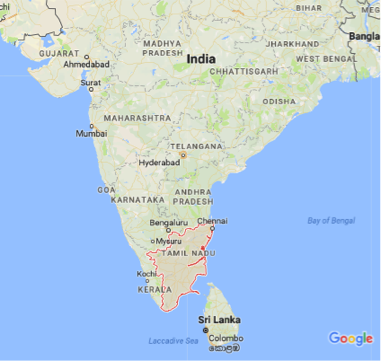Featured Article - 7 February 2017
A Better Way Forward for rabies control in India?
Tamil Nadu, a state in Southern India with a population of 77.9 million people, could improve upon its current rabies control strategy and reduce its human rabies deaths by 90% if it embraced the One Health concept that links the health of animals to the heath of humans more fully.

A new study has demonstrated the risks and costs of the current strategy, which relies on providing post exposure vaccination to people bitten by dogs and with just 34% of owned dogs vaccinated against rabies. This approach has an estimated cost of $1.68 million and the model predicted 82 annual human deaths from rabies. Although PEP is provided free, not everyone is able to access it in time to prevent the fatal disease from developing.
However, rabies is a classic example of a One Health disease, where control measures in the dog population can benefit human health. Tamil Nadu has recently established a pioneering One Health committee to facilitate the cross sectoral collaboration needed, and this study will support their efforts to provide the most cost-effective solution to protecting people from rabies.
The authors looked at strategies involving vaccination only, or vaccination and sterilisation in a proportion of the stray dog population (estimated at 700,000 dogs). The model showed that annual human rabies deaths could be reduced to fewer than 10 from 82 after five years if 200,000 stray dogs (around 13% of the total dog population) were vaccinated each year, and down to just 6.4 deaths annually if dogs were sterilized as well as vaccinated.
There is always the question of cost with these programmes though and according to World Health Organisation standards the strategy involving vaccination only is the most cost-effective way to reduce human deaths from rabies. The strategy using vaccination and sterilisation was more expensive and therefore not as cost-effective. The recommended strategy of vaccination only could be made even more cost-effective if dog owners were to bring their dogs to vaccination points in high enough numbers to enable a team to reach a much higher number of dogs.
Although this is a case study for Tamil Nadu, many aspects of the findings should be applicable across India, a country struggling with approximately a third of the global human deaths from rabies. Tamil Nadu has a relatively efficient delivery system for free PEP, but this is not the case everywhere in India. In those areas where PEP is harder to come by, the authors conclude that the benefits of canine vaccination are likely to be even greater, and are the only way to reduce the risk to human lives in the long term.
Written by Louise Taylor, based on the paper “One Health approach to cost-effective rabies control in India” published by Fitzpatrick et al. in PNAS in December 2016.
